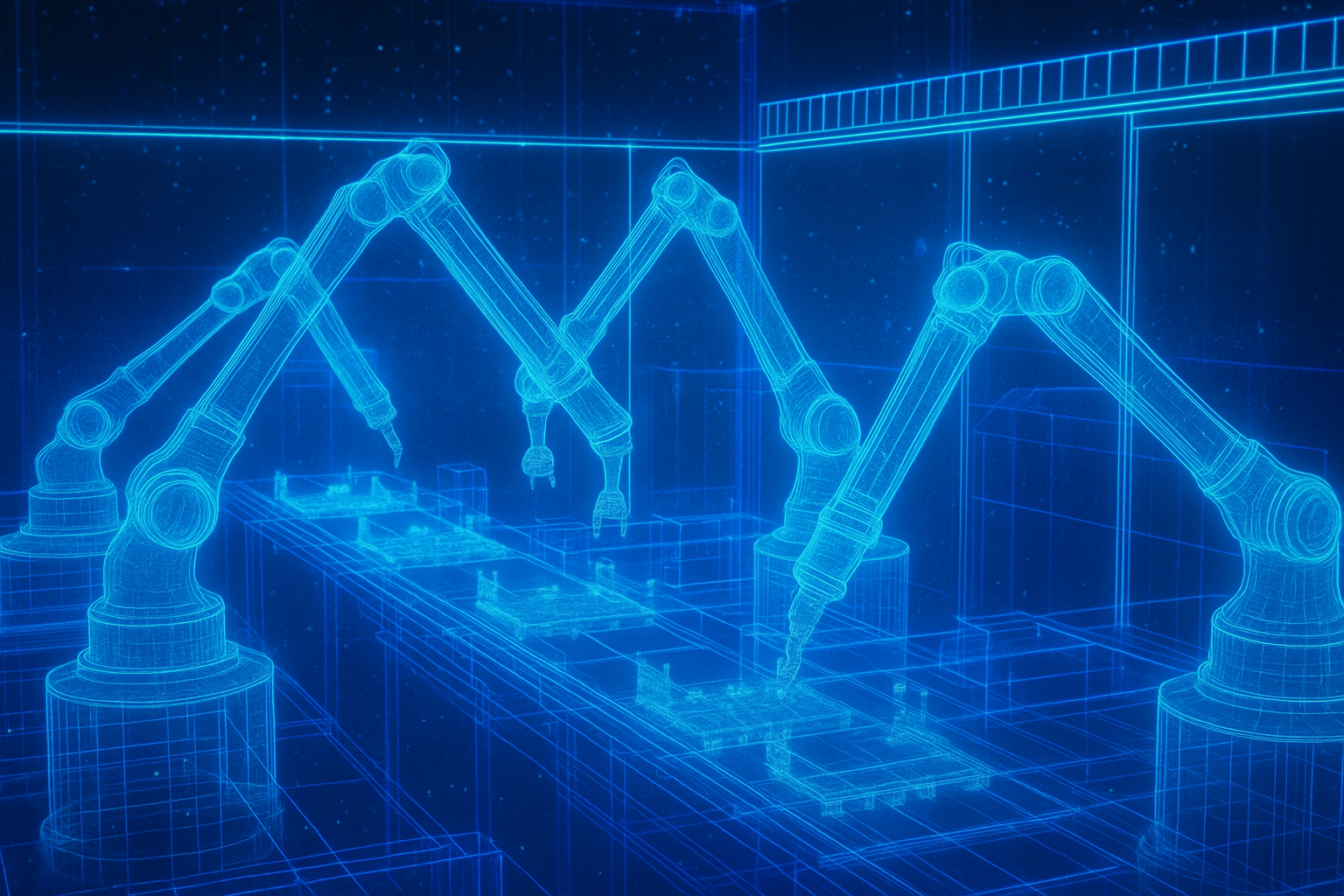Modernizing Industrial Warehouses: A Comprehensive Guide to Low Voltage Switchboard Upgrades

Low Voltage Switchboard Upgrades for Smart Warehouses: Automation & Future-Proofing Guide
Over the past decade, industrial warehouses have undergone a rapid transformation.
What were once static storage and distribution hubs have now become dynamic, high-tech environments supporting advanced automation, smart logistics, and energy-intensive operations.
From robotics and conveyor systems to temperature-controlled storage and 24/7 distribution, modern warehouses are pushing the limits of their power infrastructure. As demands for uptime, efficiency, and data-driven performance grow, so does the need for robust and intelligent electrical systems.
Why Low Voltage Switchboards Matter
At the heart of any industrial warehouse’s electrical infrastructure is the low voltage (LV) switchboard. These systems are critical for managing electrical distribution, controlling equipment, ensuring worker safety, and preventing downtime. An outdated or improperly sized LV switchboard can become a bottleneck to growth that can lead to power inefficiencies, safety risks, and equipment failures. Upgrading switchboards is no longer just a maintenance concern; it’s a strategic move for facilities looking to future-proof their operations.
Modern low voltage switchboards support much more than power routing—they’re increasingly responsible for intelligent control, remote diagnostics, energy optimization, and redundancy.
Their role in enabling automation, maintaining operational continuity, and integrating with emerging technologies such as IoT and predictive analytics is central to warehouse competitiveness.
Here, we will discuss a practical roadmap for warehouse operators, facility managers, and engineers to approach low voltage switchboard upgrades with confidence. Let’s bring together industry best practices and actionable insights to help warehouse operators better understand the role of LV switchboards in modernization efforts. We are exploring:
- The functionality and compliance requirements of LV switchboards
- Key upgrade challenges and how to solve them
- Strategies for automation, redundancy, and digital transformation
- Supply chain constraints and component sourcing
- Real-world lessons from successful upgrade implementations
Whether planning a facility expansion, preparing for automation integration, or simply facing rising maintenance costs due to aging infrastructure, this guide will help you align your switchboard strategy with long-term operational goals.
Understanding Low Voltage Switchboards
Low voltage (LV) switchboards are essential components in any industrial warehouse's electrical infrastructure. Designed to manage and distribute electrical power at voltages typically below 1,000 volts, these switchboards serve as centralized hubs that route electricity to machinery, lighting systems, HVAC units, and other operational assets. They house circuit breakers, metering devices, protective relays, and bus bars that enable safe, organized, and scalable power management across the facility.
In industrial environments, where power demand can fluctuate dramatically and system uptime is non-negotiable, LV switchboards play a crucial role in ensuring reliable power delivery, preventing overloads, and enabling rapid fault detection and isolation. Companies like Electronic Power Design (EPD) engineer LV switchboards that are not only built for rugged use but are also customizable to match evolving power demands, automation systems, and space constraints unique to warehousing environments.
Key Components in Industrial Applications:
- Main and feeder circuit breakers for controlling load groups
- Busbars (often full 1000A per square inch current density-rated) for high-efficiency power distribution
- Metering and monitoring units for tracking power usage
- Protective relays and surge protection devices for fault prevention
- SCADA or IoT-ready modules for remote diagnostics and control
Standards and Compliance
Compliance with international and national standards is essential when designing and upgrading LV switchboards. Industrial facilities must adhere to a complex matrix of regulations to ensure system safety, performance, and legal conformity.
The most critical standard includes:
- NEC (National Electrical Code): Issued by the National Fire Protection Association (NFPA) in the U.S., the NEC outlines safe installation and operational requirements for electrical systems in industrial settings.
By following these standards, engineers and facility managers ensure that switchboards can withstand thermal stress, short-circuit conditions, and environmental fluctuations, all while maintaining operator safety.
Importance of UL 891 Certification
For warehouses operating in North America, UL 891 certification is a critical benchmark. It verifies that a switchboard meets the safety and construction requirements defined by Underwriters Laboratories, a trusted authority in electrical safety testing. UL 891 evaluates aspects such as:
- Dielectric and short-circuit withstand capabilities
- Busbar spacing and insulation
- Overload protection
- Enclosure strength and accessibility
Switchboards that are UL 891 certified—like those manufactured by EPD—offer proven reliability under continuous high-load conditions. Unlike some providers that treat UL compliance as a checklist, EPD engineers their switchboards to not only meet but exceed UL 891 requirements, incorporating features like enhanced bus bracing, full-rated copper bus systems, and integrated surge protection.
Common Challenges in Switchboard Upgrades
Upgrading low voltage switchboards in industrial warehouses is not simply a matter of replacing old hardware. It’s a highly technical process that must be managed carefully to avoid operational disruption, ensure code compliance, and accommodate legacy infrastructure. Below are the key challenges most facilities face during this transition—and strategies to overcome them.
Minimizing Power Interruptions
One of the biggest concerns for any warehouse is avoiding downtime. Switchboard upgrades typically require a shutdown of critical electrical systems, which can halt operations, delay logistics, and result in financial losses.
To mitigate this:
- Phased upgrades are often used to maintain power in unaffected areas while new equipment is installed.
- Temporary power solutions, such as generator-based backup systems, can ensure critical functions continue during switchover periods.
- Weekend or off-hour installations help avoid disruption to peak operational times.
Companies like EPD work closely with clients to plan staged upgrades, often designing modular switchboards that can be brought online gradually—minimizing interruption and maintaining uptime throughout the upgrade process.
Compliance with Codes and Standards
Another challenge is navigating regulatory complexity. Upgraded switchboards must meet current standards like:
- NEC (NFPA 70), which governs grounding, bonding, wire sizing, and circuit protection in U.S. facilities.
Facilities built 10 to 20 years ago may not have been designed with these newer codes in mind. Bringing an old system up to modern standards often requires reworking layouts, changing busbar configurations, and updating documentation. This makes code compliance not just a box to check, but a structural challenge that must be solved with precision engineering.
EPD’s engineering team brings in-depth code knowledge and ensures that all new switchboards—particularly those used in demanding environments—are both compliant and performance-optimized.
Physical Constraints
Warehouses were not always built with future electrical expansion in mind. Many facilities face tight electrical rooms, inaccessible cable routing, or limited floor space. Integrating a new switchboard into these environments requires creative engineering.
Challenges include:
- Fitting new equipment into spaces not designed for modern switchgear.
- Managing complex wiring from previous installations.
- Ensuring safe working clearances as defined by NEC and OSHA standards.
EPD’s approach focuses on custom-configured switchboards, often with front-access designs, modular footprints, and adaptable mounting options to fit within confined layouts—without compromising on performance.
Aging Infrastructure
Perhaps the most significant upgrade challenge is dealing with aging infrastructure. Legacy switchboards often contain obsolete components, deteriorated insulation, or busbar configurations not designed for current electrical loads and safety requirements. These present both safety and performance risks.
Key concerns include:
- Higher fault risk due to degraded insulation or corroded terminals.
- Lack of spare parts for aging breakers or relays.
- Incompatibility with automation and modern monitoring systems.
Modernizing such systems often requires completely replacing internal components while preserving the external structure, or fully redesigning the switchboard to align with current operational needs.
Integrating Automation and Redundancy
As industrial warehouses evolve into data-rich, automated ecosystems, electrical infrastructure must keep pace. Upgrading low voltage switchboards offers an opportunity not just for capacity expansion, but also to introduce intelligent automation and redundancy systems that dramatically improve reliability, efficiency, and predictive insight.
Automation Strategies
Modern industrial facilities demand real-time visibility and control over electrical distribution. Integrating automation through SCADA (Supervisory Control and Data Acquisition) systems enables centralized monitoring of electrical loads, fault detection, and system performance.
Key benefits include:
- Live data streams on voltage, current, and temperature to prevent overloads and downtime.
- Remote diagnostics and alerts, reducing response time for electrical failures.
- Integration with energy management systems (EMS) to optimize load balancing, track power usage, and reduce peak demand charges.
EPD’s switchboard solutions are engineered with IoT-ready components and SCADA-compatible interfaces, allowing warehouse operators to seamlessly tie into building automation systems. This enables facilities to predict issues before they happen—a cornerstone of Industry 4.0 and predictive maintenance strategies.
Additionally, intelligent switchboards support condition-based maintenance rather than fixed schedules, reducing unnecessary maintenance costs and improving system longevity.
Redundancy for Reliability
Power reliability is mission-critical in high-throughput warehousing environments. Downtime—even for a few minutes—can disrupt conveyor belts, AS/RS systems, refrigeration units, and dock operations. This is why built-in redundancy is a foundational part of modern switchboard design.
Redundancy strategies include:
- Dual feeder inputs, so that if one line fails, the system automatically switches to the other without interruption.
- Main-Tie-Main configurations, offering flexible switching during maintenance or outages.
- Backup power distribution paths to isolate faults and maintain partial operation.
For smaller systems or budget-sensitive upgrades, cost-effective redundancy options, such as selective backup for mission-critical circuits only, or modular designs that allow future redundancy upgrades, are still achievable.
EPD’s expertise lies in designing scalable switchboard layouts with built-in provisions for future automation and redundancy. So, warehouse operators can start lean and scale as operations grow.
Future-Proofing Electrical Infrastructure
In an era defined by rapid technological change, future-proofing electrical infrastructure is no longer optional; it’s essential. For industrial warehouses, this means upgrading low-voltage switchboards with scalability, sustainability, and digital readiness in mind. A well-planned upgrade ensures not only current reliability but also long-term adaptability as operational demands grow and technologies evolve.
Scalability and Flexibility
Modern industrial operations are dynamic—warehouses are integrating more automation, expanding floor space, and processing larger volumes of goods. This growth places increasing demands on electrical systems.
Scalable switchboard designs allow facilities to expand without requiring a complete overhaul of their power infrastructure. Features like modular sections, main-tie-main configurations, and load-center adaptability ensure that additional equipment or automation can be supported in the future.
Electronic Power Design (EPD) provides custom-engineered, modular switchboards that support seamless expansion. Their designs allow operators to add circuits, connect new machinery, or introduce advanced controls as needs evolve—all with minimal downtime and limited infrastructure modifications.
Sustainability Considerations
Energy efficiency is no longer just a cost-saver—it’s a competitive advantage and regulatory necessity. Upgrading to switchboards that incorporate low-loss components, power factor correction, and energy-efficient busbar systems can significantly reduce electricity waste.
In addition, forward-thinking warehouses are investing in switchboards that are renewable-ready, capable of managing inputs from solar panels or battery storage systems. This includes smart load-sharing, surge protection, and integrated monitoring for renewable assets.
By adopting energy-efficient systems, facilities not only lower operating expenses but also align with corporate sustainability goals, reduce carbon footprints, and prepare for future energy regulations.
Digital Transformation
The next generation of switchboards isn’t just about electricity—they’re data platforms. IoT-enabled switchboards deliver actionable insights in real-time, from load imbalances to overheating risks, allowing for predictive maintenance, remote diagnostics, and integration into broader facility management systems.
Through technologies like:
- Digital twin modeling
- Cloud-connected dashboards
- Advanced analytics and machine learning
Can manage energy usage with far greater precision.
EPD’s switchboards are designed to integrate with smart grid protocols and automation frameworks, making them a strategic choice for digitally evolving operations.
As industrial warehouses navigate toward Industry 4.0, future-proof switchboard infrastructure ensures they stay resilient, adaptable, and ahead of operational and regulatory shifts.
Scalability and Flexibility for Evolving Smart City Demands
As smart cities grow and evolve, data centers must be flexible enough to adapt to changing demands. These switchboards are now designed with scalability and flexibility in mind, allowing data centers to expand and upgrade their power systems with minimal disruption.
Modular Expansion
Modular LV switchboards allow data centers to scale quickly by adding new power modules or reconfiguring existing systems as needed. This flexibility is critical for data centers that must keep up with the rapid expansion of smart city infrastructure. As urban areas become more connected and data processing demands increase, data centers must be able to expand without lengthy downtimes or significant infrastructure overhauls.
Future-Proofing
With next-gen switchboards incorporating features such as AI-driven power management and 5G readiness, data centers are better equipped to handle future technological advancements. This future-proofing ensures that data centers remain competitive and capable of meeting the growing demands of smart cities as they evolve.

Supply Chain Considerations
Key components of low voltage switchboards—such as copper, aluminum, and specialized plastics—are subject to global supply chain volatility. The rising demand for electrification, combined with disruptions in mining and refining, has led to price spikes and longer lead times, particularly for copper-based busbars and connectors.
Warehouses looking to upgrade must account for these constraints early in the procurement process. Delays in acquiring core materials can extend project timelines and inflate costs. Partnering with manufacturers like Electronic Power Design (EPD), who have robust sourcing strategies and supplier networks, can help mitigate these risks by offering in-house fabrication and flexible material options.
Raw Material Shortages
Modular LV switchboards allow data centers to scale quickly by adding new power modules or reconfiguring existing systems as needed. This flexibility is critical for data centers that must keep up with the rapid expansion of smart city infrastructure. As urban areas become more connected and data processing demands increase, data centers must be able to expand without lengthy downtimes or significant infrastructure overhauls.
Quality Control Challenges
As manufacturers navigate material shortages, some may substitute lower-grade components or rush production—leading to inconsistent quality. In switchboard systems, even minor deviations in insulation quality, busbar tolerance, or enclosure durability can create serious safety and performance risks.
Working with certified suppliers who adhere to UL 891 standards is essential to ensuring long-term system reliability. EPD, an ISO 9001:2015 certified manufacturer, maintains rigorous QA processes and pre-qualifies components to ensure compliance, durability, and performance even under demanding conditions.
Mitigation Strategies
To navigate supply chain uncertainty while maintaining quality and project deadlines, consider the following:
- Early Engagement with Vendors: Initiate sourcing discussions early to lock in timelines and costs.
- Diversified Supplier Base: Avoid relying on a single vendor for critical components. Work with partners that offer alternative sourcing channels.
- Modular Fabrication and Pre-Assembly: Opt for modular switchboards that can be pre-assembled off-site to reduce on-site integration time and potential delays.
- Local Manufacturing Capabilities: Choose providers that offer domestic or nearshore production options to reduce international shipping risks.
EPD’s in-house engineering and fabrication capabilities allow clients to minimize lead times and maintain project schedules even when global supply chains are under pressure. Their flexible material sourcing and modular construction approach provide a competitive edge in managing modern switchboard upgrades.
Industry Insights: What We’re Seeing in the Field
Low voltage switchboard upgrades are no longer optional for industrial warehouses looking to remain competitive. While many facilities have delayed modernization due to cost concerns or operational complexity, the real-world impact of staying with outdated infrastructure is becoming increasingly clear.
Growing Investment in Smart Warehousing
Across the industrial sector, we’re seeing a shift toward automation-heavy, energy-aware operations. Warehouses are investing in robotics, AI-driven logistics, and smart inventory systems—all of which demand clean, uninterrupted power delivery. Legacy switchboards often lack the intelligence, scalability, and fault-tolerant design required to support these innovations.
The Push Toward Electrification and Energy Efficiency
Facilities are also under pressure to reduce carbon footprints and meet evolving sustainability benchmarks. As a result, there’s increased demand for switchboard systems that:
- Support energy monitoring and power quality analysis
- Integrate easily with renewable energy sources and storage
- Help reduce overall electricity consumption through smart load balancing
EPD (Electronic Power Design) has been at the forefront of supporting this transformation—developing UL 891-certified switchboards with built-in support for predictive diagnostics, Building Management System (BMS), and modular expandability.
Lessons from Modernization Leaders
From our experience with forward-looking industrial facilities, here are a few key insights:
- Plan for modularity: Warehouses that adopt scalable systems upfront are better positioned to adapt to shifting load demands and automation expansion.
- Don’t overlook data: Real-time monitoring and diagnostic capabilities are becoming essential, not luxuries. They allow teams to make informed decisions and minimize costly failures.
- Internal collaboration is key: Successful upgrades are often led by cross-functional teams—bringing together electrical engineers, facility managers, IT, and operations.
By aligning upgrade projects with long-term operational goals, companies are not just replacing old equipment—they’re building the foundation for smarter, cleaner, and more resilient industrial environments.
Get in Touch for Customized Solutions
Ready to modernize your electrical infrastructure with precision, safety, and scalability in mind?
Modernizing low voltage switchboards is more than a technical upgrade—it’s a strategic investment in the future of industrial warehousing. As operations become more automated, power-hungry, and data-driven, aging electrical infrastructure simply can’t keep up with the demands of efficiency, safety, and scalability.
Whether you’re facing space limitations, planning for expansion, or navigating supply chain complexities, a smart, well-executed switchboard upgrade can eliminate bottlenecks and unlock new operational potential.
About the Author
Felix Gonzalez
Sr. Vice President - Sales and Marketing
Felix Gonzalez is the Senior Vice President of Sales and Marketing at EPD and has experience in the design and specifications of complex electrical systems. A problem-solver and solution provider, he is skilled in aligning new business strategies with overall company goals. Felix offers deep experience across several industries, including power generation, cement, plastics, oil and gas, drilling, marine, and renewables... Read More

